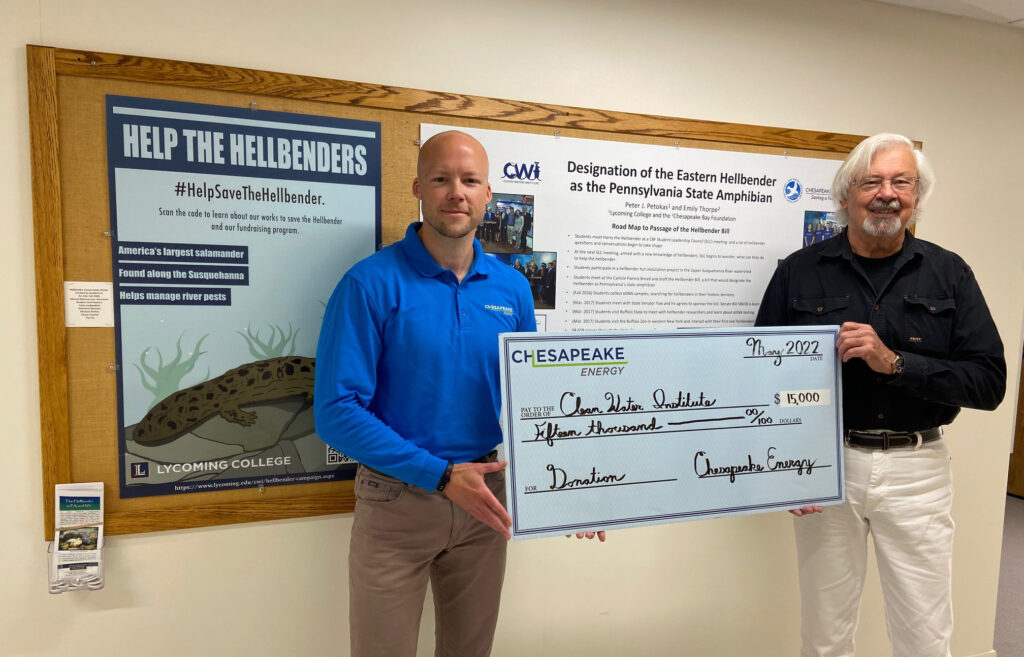Hellbenders may sound ominous, but to our neighbors in Pennsylvania, they’re critical to local watershed ecosystems and were recently named the state’s official amphibian. The largest salamander species, Eastern hellbenders have long been in decline in the Loyalsock Creek Watershed (covering four counties) with limited explanation as to why. Lycoming College’s Clean Water Institute (CWI) — a program that offers students hands-on research opportunities related to local waterways — launched the Eastern Hellbender Conservation Campaign to evaluate the status of the hellbender and to develop conservation measures to restore the species to a healthy, self-sustaining state.
With a research plan in place, the campaign needed funding to start its work. The organization partnered with Chief Oil and Gas, a company that had supported other environmental conservation projects in the area. Chief’s initial investment kickstarted the campaign in 2021 and Chesapeake (after acquiring Chief) continued its commitment in 2022.
“Natural gas is the backbone of our local economy, and we believe the industry should play a similar role in environmental conservation,” said Jonah Howe, Stakeholder Engagement at Chesapeake. “Environmental stewardship is important to our company but it’s also important to us as employees — we don’t just work in the area; we live here too.”
The hellbender conservation campaign began with a field study to evaluate the extent of the Eastern hellbender population. Through assessment of deep-water sites in the Loyalsock Creek watershed, students and researchers determined that the hellbender population is small and likely a remnant of a once a large and self-sustaining population. The group studied reasons for this decline, noting that the watershed’s water quality and food availability are within normal limits. The team’s leading hypothesis is that an invasive crayfish species may have introduced a fungal or viral disease to the hellbender population, but other ideas include habitat loss or climate change.
“Our partnership with the natural gas industry has given us the opportunity to assess the potential to restore a unique salamander species to its historic range in north-central Pennsylvania,” said Dr. Peter Petokas, Research Associate with CWI and lead investigator for the project. “During our first field season, we were excited to discover the presence of a small population of the Eastern hellbender in the deeper waters of Loyalsock Creek and we can now move forward to identify where, when and how we can employ interventions to bring the species population to a self-sustaining condition.”
With Chesapeake’s support, the research team continues its surveys and assessments. The study hopes to promote reproduction in the wild and collect fertile eggs for head-starting — a process that brings eggs into a laboratory setting to hatch and develop until the salamanders are large enough to be safely released to the watershed. Future project work may also include opportunities for Chesapeake employees to volunteer, including building artificial habitat structures to encourage reproduction and facilitate egg collection.
“We look forward to continuing to support this conservation effort and partnering with local organizations committed to both a healthy watershed and perpetuating this species,” said Howe.

“Natural gas is the backbone of our local economy, and we believe the industry should play a similar role in environmental conservation,” said Jonah Howe, Stakeholder Engagement at Chesapeake.